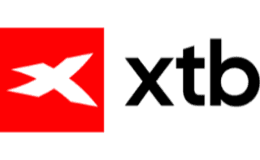
Fractional shares
Free to open an account
The FTSE 250 and S&P 500 are both stock market indices that track a certain number of stocks in an exchange or country. The S&P 500 is 500 stocks on US exchanges, chosen by a committee. The FTSE 250 is the 250 stocks after the 100th stock on the London Stock Exchange when you order the companies on the exchange by their market capitalisation.
The S&P 500 and the FTSE 250 are collections of stocks from their respective exchanges – in the FTSE 250’s case, it’s a collection of stocks on the London Stock Exchange and in the S&P 500’s case, it’s a collection of US stocks.
Another difference is how each index is constructed. The stocks that make up the S&P 500 are hand-picked by the US Index Committee, which picks the leaders in 11 sectors. The FTSE 250 is constructed by data alone – companies need to have a premium listing of equity shares on the main market of the London Stock Exchange and must have a minimum free float of 10% (UK incorporated) or 25% (non-UK incorporated). The stocks are ordered by their market capitalisation – the top 100 stocks make up the FTSE 100 and the following 250 make up the FTSE 250.
The S&P 500 is made up of 500 stocks, while the FTSE 250 is just 250 stocks. The overall market capitalisation of the S&P 500 is significantly higher than that of the FTSE 250 because a lot of the companies in the FTSE 250 are smaller. The market cap of the S&P 500 is $36.7 trillion (£29.74 trillion), compared with the market cap of the FTSE 250, which is £419 billion.
As we mentioned above, the S&P 500 is worth more than 70 times the value of the FTSE 250. It holds twice the number of stocks.
The S&P 500 has a better diversified set of stocks. It has a lot of technology stocks, making up around 15% of the index, but it’s well spread across a number of sectors. The FTSE 250 has a number of financial companies and a small number of health care, utilities and communication stocks.
If you’re looking for diversification, you might decide to invest in both indices. This gives you additional global exposure.
These trading apps allow you to invest in companies within the indices directly or to invest in funds or ETFs.



Here are some of the best performing FTSE 250 and S&P 500 funds according to justETF:
| Fund | Icon | 5-year performance (to Feb. ’24) | 1-year performance (to Feb ’24) | Link to invest |
|---|---|---|---|---|
| Vanguard FTSE 250 UCITS ETF Distributing (VMID) |  | 15.50% | -0.37% | Invest with XTBCapital at risk |
| Invesco FTSE 250 UCITS ETF (S250) |  | 14.69% | -0.68% | Invest with IGCapital at risk |
| Xtrackers FTSE 250 UCITS ETF 1D (XMCX) | 14.21% | -0.93% | Invest with IGCapital at risk | |
| iShares FTSE 250 UCITS ETF (MIDD) |  | 13.46% | -0.89% | Invest with eToroCapital at risk |
| HSBC FTSE 250 UCITS ETF GBP (HMCX) |  | 13.00% | -1.29% | Invest with IGCapital at risk |
| ETF | Icon | 5-year performance (to Jan. ’25) | 1-year performance (to Jan. ’25) | Link to invest |
|---|---|---|---|---|
| Invesco S&P 500 (SPXP) |  | 105.91% | 27.36% | Invest Capital at risk |
| Xtrackers S&P 500 Swap (XSPX) | 107.48% | 28.50% | Invest Capital at risk | |
| iShares Core S&P 500 (CSP1) |  | 103.02% | 26.69% | Invest Capital at risk |
| HSBC S&P 500 (HSPX) |  | 106.40% | 28.57% | Invest Capital at risk |
| Vanguard S&P 500 (VUSA) |  | 105.75% | 28.37% | Invest Capital at risk |
| SPDR S&P 500 ETF (SPX5) |  | 105.53% | 28.41% | Invest Capital at risk |
All investing should be regarded as longer term. The value of your investments can go up and down, and you may get back less than you invest. Past performance is no guarantee of future results. If you’re not sure which investments are right for you, please seek out a financial adviser. Capital at risk.
![]()
The S&P 500 has performed better historically, but that doesn’t mean that it’s going to do well in the future. But why choose? Investing in both the FTSE 250 and the S&P 500 would give you diversification across lots of sectors as well as let you invest in lots of different-sized companies across the globe.
If you do wish to choose between them, choose one that’s got exposure to the types of stocks you’re interested in – the FTSE 250 has a lot of defensive stocks, like consumer staples and financial services, while the S&P 500 has a lot of technology, industrial and healthcare stocks.
 | Centrica |
 | Tritax |
 | Unite Group |
 | Harbour Energy |
 | Convatec |
 | Apple |
 | Microsoft |
 | Amazon |
 | Meta Platforms |
 | Alphabet (Google) |
The FTSE 250 and the S&P 500 are both popular stock market indices to invest in. Investors typically choose to invest in an index with an index fund. These are designed to reflect the performance of the index, either by replicating it or by choosing similar stocks, or a mixture of the two.
Whichever you choose, you’ll get a well-diversified range of shares across a lot of sectors and investment types.
All investing should be regarded as longer term. The value of your investments can go up and down, and you may get back less than you invest. Past performance is no guarantee of future results. If you’re not sure which investments are right for you, please seek out a financial adviser. Capital at risk.
Learn how to invest in the Nasdaq 100 from the UK, including where to access it and some of the best funds and ETFs available to investors.
Here’s your ultimate guide to navigating the world of global investing from the comfort of your sofa or even on your phone on the go.
The three best-known US indices go head to head. Search by company, review performance over time and understand key differences.
Learn how to invest in the Euro Stoxx 50 from the UK and discover some of the best Euro Stoxx 50 index funds and where you can invest in them.
Find out more about the Nikkei 225, some companies that make it up and how you can invest in the Nikkei 225.
Find out what makes up the Hang Seng index. We’ve compiled the different ways that you can invest in Hang Seng, such as through ETFs.
Find out how to invest in DAX, the 40 largest companies on the Frankfurt Stock Exchange. We’ve compiled some ETFs and other ways you can invest.
In a nutshell, an index fund is a low-cost portfolio of shares and other assets that tracks a financial or stock market index. They’re a popular investment choice in the UK and worldwide.
Learn how to invest in the S&P 500 from the UK and discover some of the best S&P 500 index funds and where you can invest in them.
The FTSE 100 is the UK’s most famous stock index. Here’s how you can invest in it today.